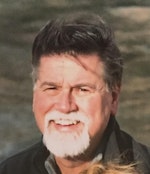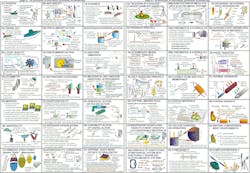Innovation and invention by nature are creative processes. People involved in bringing creative processes to fruition possess an ambiguous innate talent, for those not familiar with the work. A divinity of inspiration or a flash of insight or genius while engaged in other pursuits is how the process is often described. Is this an absolute truth or are there other avenues to invention for the rest of us?
Nikola Tesla, the great Serbian-American inventor, recalls one of his many seminal inventions, the AC motor, with a similar mystic narrative: “Like a flash of lightning and in an instant the truth was revealed. I drew with a stick on the sand the diagrams of my motor. A thousand secrets of nature which I might have stumbled upon accidentally I would have given for that one which I had wrestled from her against all odds and at the peril of my existence.”1
These revelations of how the creative invention process works shroud the fact that invention is largely work for most, while at the same time being a work that requires creativeness, insightfulness, and discipline.
The exception is not the rule relative to invention. This representation of the origin or process of invention—of a genius or heroic lone inventor—is held in regard due to its reinforcement of the American cultural precept that individualism is at the root of most success. This was termed as the “transcendentalism” approach/theory by innovation researcher Abbott P. Usher in his highly cited study2 in 1929. He characterized the invention process as the outcome of one of three approaches: transcendentalism, mechanistic process, and cumulative synthesis.
Let’s look at each briefly and draw some working conclusions to guide us to structured innovation processes. Is this even possible? Or is structured innovation an oxymoron?
The transcendentalism approach attributes invention to the genius of the rare individual who recognizes something not perceptible to even one “skilled in the art” of invention.
The mechanistic process approach footnotes the inventor in the process of invention. Invention in a mechanistic view is driven by historical tension, a temporal crescendo of events and necessity being the driving forces behind invention and new innovation.
Usher rejected these explanations as not supported historically and not considering temporal discontinuities within the invention process that are filled by individuals with “acts of insight.” He proposed a third theory called the cumulative synthesis approach. It asserts that invention and innovation are the historic accumulation of information, needs, and other technologies intersecting in time with the individual whose informed sensibility allows for exceptional acts of insight that enable the creation of a new invention and subsequent market-directed innovation.
The conclusion drawn here is that the cumulative synthesis approach best fits the author’s experience as an inventor and, not uncoincidentally, is supported by numerous theses and studies authored since Usher’s original work. But the transcendentalist approach can be supported historically. Individuals like Einstein, Tesla, Fuller, and Jobs seem to bear this out. The mechanistic view requires little exceptionalism of the individual or organization and has little or no resonance with critically studied historical innovations in literature or this inventor’s experience.
Invention as a structured process
The overview of academic theories of invention is that to be a successful inventor, one is mad brilliant or is someone that who works at it. Discussion of the second approach is more beneficial for most. The brilliant can stop reading here with the understanding that invention for them is a highly individual and even a mystic journey. Personally, I like to characterize this second approach as more of a stonecutter.
The Stonecutter’s Credo, attributed to Jacob Riis,3 a Danish immigrant to the U.S. during the early part of the 20th century, who later became a NY Times journalist, puts into context this approach: “Look at a stonecutter hammering away at his rock, perhaps a hundred times without as much as a crack showing in it. Yet at the hundred-and-first blow it will split in two, and I know it was not the last blow that did it but all that had gone before.”3
My point is that the cumulative synthesis approach takes work, persistence, and probably multiple failures before eventual success. These initial 100 blows put failure into a different context. They really are invisible steps to success. Thomas Edison, the most prolific U.S. inventor of the 20th century, is said to have failed 9,999 times prior to producing an instantiation of his electric light bulb that worked. He’s a great example of a cumulative synthesis inventor. At around 10,000 attempts, he succeeded.
Some of his recorded thoughts on this seminal work of invention follow: “Before I got through, I tested no fewer than 6,000 vegetable growths, and ransacked the world for the most suitable filament material. The electric light has caused me the greatest amount of study and has required the most elaborate experiments,” he wrote. “I was never myself discouraged or inclined to be hopeless of success. I cannot say the same for all my associates. Genius is 1% inspiration and 99% perspiration.”4
Do structured tools make the journey for the cumulative synthesis inventor more streamlined and effective? Yes—and many books examine the process of structuring innovation. Some of my favorites:
- The Innovator’s Dilemma: When New Technologies Cause Great Firms to Fail by Clayton Christensen
- And Suddenly the Inventor Appeared: TRIZ, the Theory of Inventive Problem Solving by Genrich Altshuller
- 101 Design Methods: A Structured Approach for Driving Innovation in Your Organization by Vijay Kumar
- Lightning in a Bottle by David Minter & Michael Reid
- Patent it Yourself by David Pressman
I would like to focus on one seminal examination of invention as a process: the work of a Russian engineer, inventor, and science fiction writer Genrich Altshuller (1926-1998).5 The second bullet above delves deep into his theory of inventive problem solving, which is a valuable read about the art and science of invention. The Russian acronym for his theory is “TRIZ” (pronounced trees). In December 1948, while a Lieutenant of the Caspian Sea Military Navy, Altshuller wrote a perilous letter addressed “Personally to Comrade Stalin.” Altshuller wrote that there was “chaos and ignorance” in the USSR’s approach to innovation and inventing. At the end of the letter, he expressed an even more contemptible thought: “There exists a theory that can help any engineer invent. This theory could produce invaluable results and revolutionize the technical world.” The harsh reply to this letter did not arrive until two years later. He was sent off to the Russian gulags for four years, after being arrested and charged with “inventor’s sabotage” in 1950.
The basic structured approach of TRIZ is that after you have a general concept for your solution to a problem, a preliminary inventive concept, you should work through the listed principles of invention to see if any might provide a route to making your general concept work. This method requires exploration and consideration of multiple combinations and how contradictions and reconcilements exposed during your journey could lead to other routes for solutions. From experience, it’s a method that ensures you never experience inventor’s block and the probabilities for success are also significantly enhanced.
Why does your invention process matter?
Creating inventions, for most, is the journey of the cumulative synthesis inventor. The inventor as one whose unique combination of knowledge and insights intersect with opportunity. This path is definitely accelerated by inventors with a deep knowledge base of relevant topics. This knowledge provides for exceptional insights, although it can be compensated for by diligence to the task and the understanding that repeated failure is part of the route to ultimate success as an inventor. A thick skin to failure is an attribute here.
Inventing, for most, is typically not a mystic process, and the use and understanding of tools that structure and guide the invention process are highly beneficial. Let’s answer the question of whether the term “structured innovation” is oxymoronic. The evidence that this is not the case is overwhelming, but the exception is not the rule.
Expand your structured innovation toolset by reading about the topic and remember there’s much to learn about invention. Feynman’s Lectures on Physics (1963),7 Altshuller’s TRIZ, and 40 Principles of Invention (~1950) are not going to fall out of relevance or stop being of exceptional value any time soon. Try using the iterative 40 principles process next time you’re stumped about how to move an inventive concept forward—it may be the ticket and your new inventive power tool.
It is within all of us to innovate. Today is a good day to file an invention disclosure. Just do it!
REFERENCES
- R. Munson, TESLA – Inventor of the Modern, W.W. Norton & Company, New York, NY (2019).
- A. P. Usher, A history of mechanical inventions, McGraw-Hill Book Company, New York, NY (1929).
- J. A. Riis, The Making of an American, Illustrated, Cosimo Classics, New York, NY (2020).
- See www.fi.edu/history-resources/edisons-lightbulb.
- See www.aitriz.org/articles/TRIZFeatures/30383039-4D6973687261.pdf.
- See https://commons.wikimedia.org/wiki/File:40_principles_of_TRIZ_method_225dpi.jpg.
- Back in about 2000, as part of my job I was visiting the MIT Media Lab on a corporate sponsorship visit. The Media Lab employs faculty from all sorts of different disciplines, and some of the best researchers in the world work there. I was at an evening mixer at a local Cambridge watering hole with the other corporate sponsors and the Media Lab’s staff. During the evening I had an interesting discussion with a tenured Massachusetts Institute of Technology Physics Professor working at the Lab. Within the mix of our conversation the topic of what the definition of the science of physics covered came up. He looked at me squarely and said, “The answer is not as protracted as you might think. If Feynman wrote about it, it is physics. If he did not, it is not.”

Fred Thomas
Fred Thomas works in HP’s Advanced Compute and Solutions (ACS) Business as a HP Distinguished Technologist. He has degrees in Mechanical Engineering and Physics from Bucknell University. Among his roles in ACS is Structured Innovation Lead for R&D, where he facilitates their organization-wide Friday Morning Innovation sessions. He is also ACS’s Patent Technical Coordinator. His innovative work product has included crucial inventions in products like HP Z Captis, HP MediaSmart Home Server, HP digital EO pen technologies, Iomega Zip, Jaz, Floptical & Clik! data storage drives, Identi-Key machine vision for retail key blank recognition, and AO-DVD subwavelength optical data storage, among others. Thomas has been with HP 18 years and with more than 100 U.S. Patents, has been around the IP (Intellectual Property) horn a few times. Outside of work and inventing things, he enjoys hiking with his family, reading, watching select sports, and a good Will Ferrell movie here and there.



